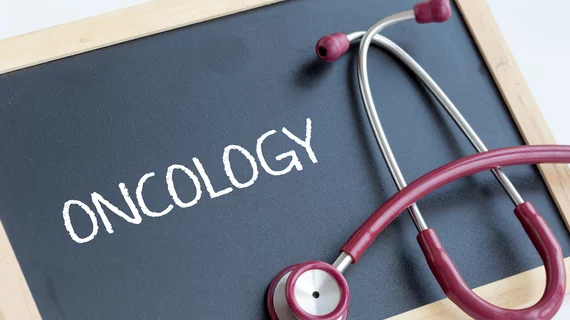‘Action is urgently needed’ to spread cancer imaging know-how outside of top institutions, experts say
As U.S. radiologists attempt to tackle cancer disparities across the country, a new large-scale analysis is splashing cold water on the notion that this work is anywhere near finished.
Analyzing Medicare data tied to millions of diagnostic exams, experts noted a doubling of the number of advanced oncologic imaging scans performed in academic practices between 2004 and 2016. And at the individual state level, use of diagnostic tools appeared to correlate with radiologist supply, rather than cancer prevalence, researchers wrote Sunday in JACR.
These trends highlight the need to better disperse cancer imaging experts into community settings, and bolster radiologists’ adherence to evidence-based guidelines, scientists concluded.
“…Such progressive concentration of oncologic imaging at academic centers signals a potential worsening of disparities in radiologists’ exposure to, and familiarity with, such examinations, and consequently growing challenges in maintaining high-quality oncologic imaging services throughout the full breadth of radiology practices,” noted lead author Andrew Rosenkrantz, MD, with NYU Langone Health, and colleagues from several other institutions. “Action is urgently needed to disseminate the current expertise at cancer centers and major academic institutions to community and smaller radiology practices that may have very low oncologic imaging exposure.”
To reach their conclusions, Rosenkrantz and colleagues analyzed a national sample of some 5 million Medicare claims submitted in 2016 and compared them up against a similar total from 2004. All told, oncologic imaging accounted for just 3.9% of the total sample in 2004, which increased slightly to 4.3% by 2016. Advanced cancer imaging—including computed tomography, MRI and PET/CT—meanwhile, accounted for 10.8% and 9.5% of the imaging pie, respectively.
Of note, the team found that advanced oncologic imaging performed in academic settings swelled from just 18.8% in 2004 up to 34.1% a dozen years later. The majority of such studies, however, still occurred in community settings at 65.9%.
Rosenkrantz et al. also noted widespread geographic variance in percentages of advanced oncologic imaging from one state to the next. Arkansas hit the highest rate at 15.3% in 2016, while Wyoming represented the bottom at 4.9%. Same for utilization rates, with the District of Columbia delivering at the highest clip (162 exams per 1,000 Medicare beneficiaries) versus Wyoming, again at the bottom (25 per 1,000). The team noted that utilization appeared to correlate with radiologist supply, rather than state-level cancer prevalence.
The researchers suggested several possible remedies to address these numbers including creating networks of physicians to deliver second opinions and increased use of telementoring and peer learning.
“These findings suggest that efforts to ensure consistent access to high-quality cancer care must include strategies to more broadly disseminate cancer imaging expertise, particularly to settings in which radiologists’ exposure to such imaging may be low,” the team argued. “It should also be noted that high-quality care depends on evidence-based practice, which should include adherence to evidence-based cancer imaging guidelines,” they added.
You can read more of the analysis in the Journal of the American College of Radiology here.

